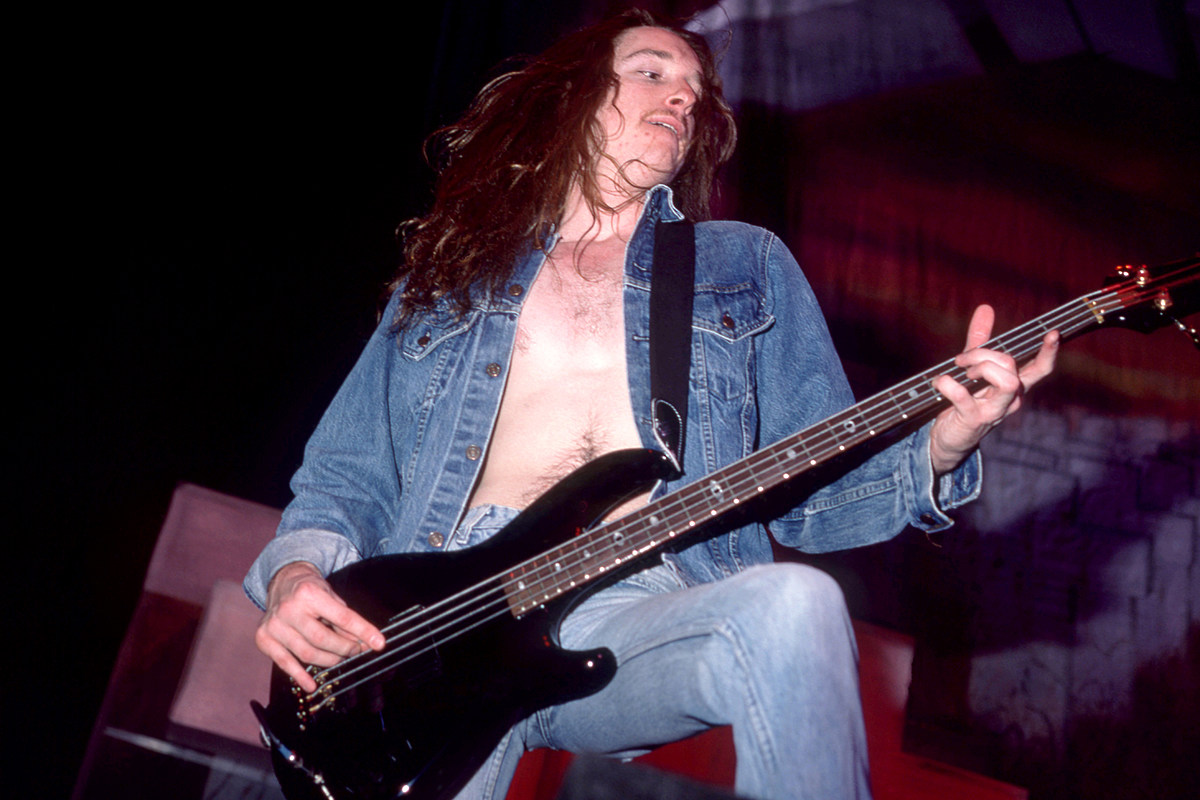Classic Rock
The Day Cliff Burton Had His First Metallica Rehearsal
Cliff Burton required months of persuading before he finally agreed to take a chance on Metallica. Still, all parties instantly knew they’d unlocked monstrous new potential when the bell-bottomed bassist took part in his first rehearsal on Dec. 28, 1982.
Singer and guitarist James Hetfield and drummer Lars Ulrich had founded Metallica in Los Angeles the previous year, quickly recruiting lead guitarist Dave Mustaine and bassist Ron McGovney. They made a name for themselves in California with breakneck punk-metal maelstroms and take-no-prisoners live performances. Soon, though, McGovney’s musical shortcomings and personality clashes with his bandmates led Metallica to put out feelers for a new bassist.
Metal Blade Records founder Brian Slagel, who issued Metallica’s first-ever recording on the inaugural Metal Massacre compilation, recommended Burton. He lived 30 miles outside San Francisco in Castro Valley, and was then playing with the Bay Area metal band Trauma. Hetfield and Ulrich went to see Trauma in late October 1982 when they played at the Troubadour in West Hollywood — and they instantly knew they had found their man.
Burton’s wild stage presence, which earned him chronic back pain, included shredding a Rickenbacker bass with his bare fingers as if it were a lead guitar. He combined the ferocity of Iron Maiden‘s Steve Harris and the virtuosity of Rush‘s Geddy Lee. “When Lars and I had seen him play with Trauma, our jaws fell onto the floor,” Hetfield told Metal Hammer in 2009, “and we said, ‘We’ve got to get this guy.'”
He and Ulrich returned to the Troubadour the following night to see another Trauma show, and Hetfield asked Burton about joining Metallica. “We said, ‘We’re in this band, we’re looking for a bass player and we think you’d really fit in – because you’re a big psycho,'” Hetfield remembered in Mick Wall’s 2010 Metallica biography Enter Night. “And he knew that. It was no surprise to him. But the music made him feel like that.”
As luck would have it, Burton was growing tired of the increasingly theatrical Trauma, who were “starting to get a little commercial in different ways,” he later told photojournalist Harald O. Yet Burton would entertain Metallica’s offer just under one condition: They would have to move to San Francisco, because he wouldn’t be caught dead in L.A.
That worked fine for Metallica, who had played a few successful shows in the Bay Area and felt a kinship there that they hadn’t in Los Angeles. “I think in L.A. we had always felt like outcasts, like we never belonged,” Ulrich said in Enter Night. “It seemed like the music was secondary to the partying. Up in San Francisco, there was just a different level of passion, and people reacted differently to the music. So when we decided to not only pursue Cliff but to offer ourselves to Cliff, when I told him we would be glad to leave behind L.A., and when I realized that it actually became conditional for him, that the only way he would even consider joining the band would be if we moved to San Francisco, it was a no-brainer.”
The only thing left was breaking the news to McGovney, who had seen Burton fraternizing backstage with his bandmates when he played his last Metallica show on Nov. 30, 1982 at San Francisco’s Mabuhay Gardens. The final straw came the next day when Mustaine poured beer into the pickups of his bass, and McGovney promptly ejected Metallica from their practice-space crash pad, which his parents owned.
Less than a month later, Hetfield, Ulrich and Mustaine loaded their gear into a trailer and headed north, crashing at 3132 Carlson Blvd. in El Cerrito, home of their friend Mark Whitaker, who managed local thrashers Exodus. The property became known as the MetalliMansion and functioned as the band’s headquarters for the next three and a half years. It also served as the site of Burton’s first all-night jam with Metallica, as the bassist revealed the breadth of his musical knowledge and taste.
“Cliff turned me and James onto a lot of stuff at the time,” Ulrich told Wall in 2009. “From Peter Gabriel to ZZ Top to a lot of stuff that we didn’t really [know]. He flew the flag for bands like Yes. We’d never really experienced a lot of that type of stuff. Of course, at the same time, he had never heard that much Diamond Head or Saxon and Motorhead, or anything like that. So there was definitely a cool give and take there.”
Hetfield ended up connecting on a far more personal level, too. “Besides introducing us to more music theory, he was the most schooled of any of us, He had gone to junior college to learn some things about music and taught us quite a few things,” Hetfield told Metal Hammer. “He and I aligned a lot closer as friends, as far as our activities, music styles that we liked, bands that we liked, politically, views on the world, we were pretty parallel on that wavelength.”
With Burton in the fold, Metallica’s world-conquering lineup inched ever closer to fruition. Within a few months, Mustaine would be out, Exodus shredder Kirk Hammett would be in, and Metallica’s 1983 debut album Kill ‘Em All would change the face of heavy metal.
That left just one bone for the rest of Metallica to pick with Burton. “He was a wild, hippie-ish, acid-taking, bell-bottom-wearing guy. He meant business, and you couldn’t fuck around with him,” Hetfield told Rolling Stone in 1993. “I wanted to get that respect that he had. We gave him shit about his bell bottoms every day. He didn’t care. ‘This is what I wear. Fuck you.'”
The Hilariously Bad First Concerts of Rock’s Biggest Bands
There were long car rides, tiny stages and embarrassing situations on the way to stardom.
Did Metallica Almost Fire Lars Ulrich?

